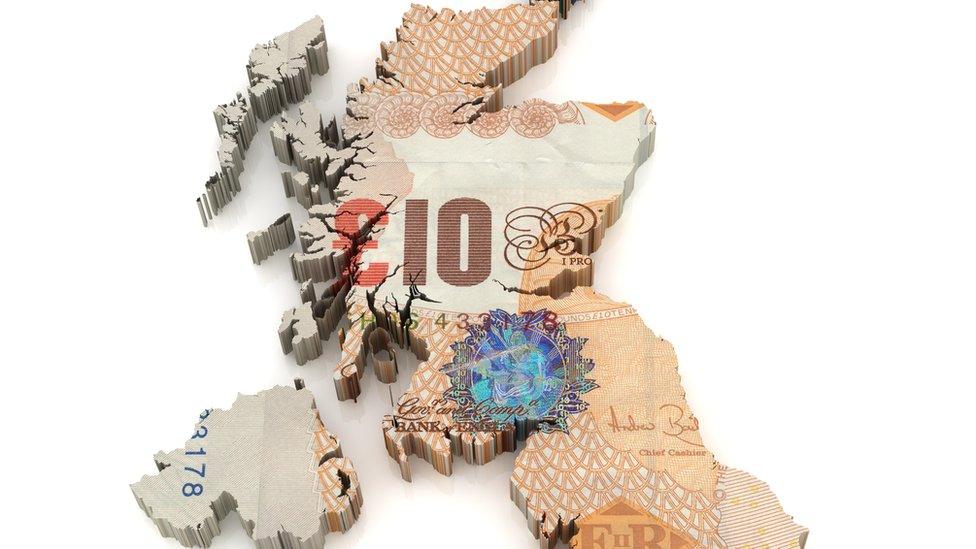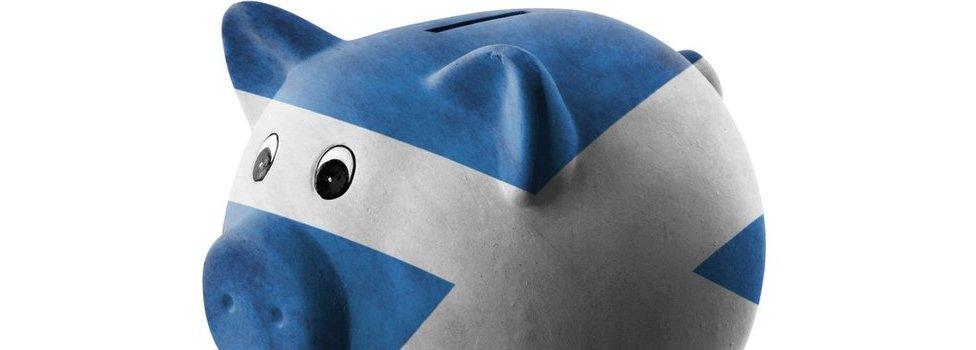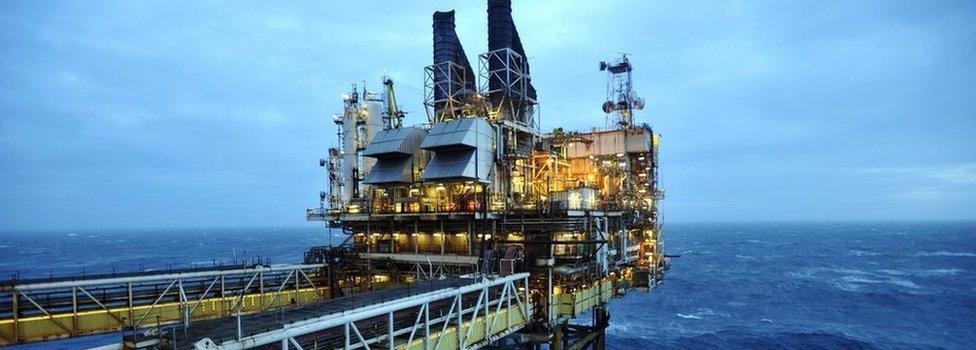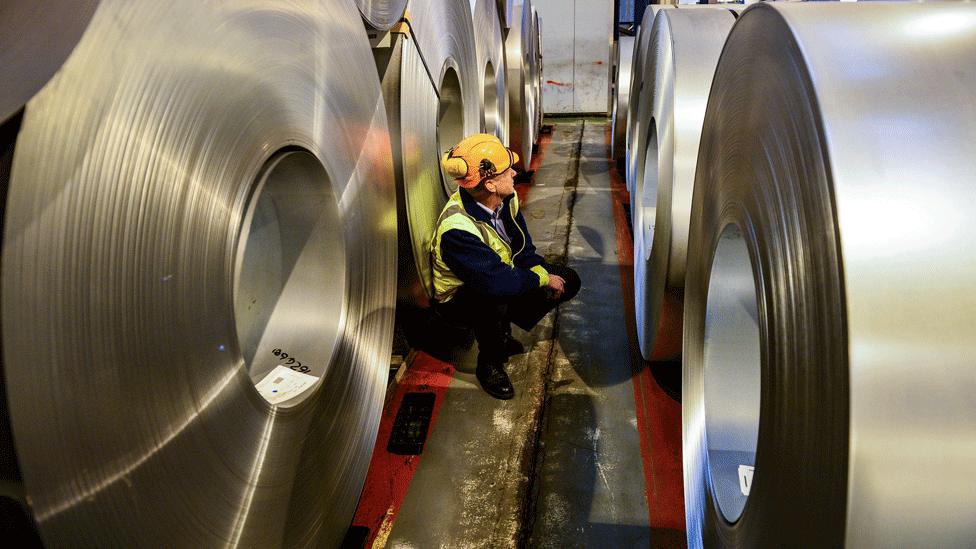Gers figures: Tax, spend and damned statistics
- Published

The latest set of Gers figures was published on Wednesday
Like one of those railway or airport departure boards that shoogles furiously and comes to rest on the latest update, so Gers has come round again. And it's not clear the dials have changed all that much.
Government Expenditure and Revenue Scotland (Gers), for the 24th year, shows us how much tax is thought to have been raised from Scots, how much was spent in Scotland or on behalf of Scots, and how the two compare.
Grease the departure board with a dollop of oil revenue, and take your pick of interpretations.
Either this shows that Scotland, if it were independent, would be running a huge, unsustainable deficit - forcing the government at first to borrow heavily, and then to cut spending and/or raise taxes.
Scottish Tories describe the gap as 'the union dividend'. But remember this is not a transfer of funds from taxpayers elsewhere in the UK. It's a loan from the bond markets, also known as future taxpayers.
The UK deficit is in the safe and sustainable zone, below 3%, but it's still a deficit. The alarming figure is that Scotland's £13.3 billion deficit accounts for almost 30% of the UK one.
Alternatively, this shows what you get from being inside the UK, with relatively low tax take.
From that pro-independence perspective, it is not a measure of how Scotland would fare, but how it has fared without power at Holyrood.
Two variations on that theme are:
if only Scotland had control of oil reserves and got as much out of them as independent Norway
Gers is unreliable because it's based on estimated figures
Credibility
Let's look behind those claims.
On the Norway question, that ship has sailed, and it's not coming back. Norwegians have a different production profile, with bigger oil fields. They put their tax revenues aside from 1990, kept a big ownership stake, while maintaining high tax levels and a self-denying discipline on spending it.
Britain didn't, and that is regretted by people on both sides of the independence debate. Scotland didn't have the opportunity to do so.
On the reliability of the figures, estimates are the basis for much of our understanding of the economy and public finance. For Gers, they have been honed over 24 years, against fairly rigorous statistical rules, and they are independently produced.
Those who don't like them might have more credibility if they had lodged their complaints when Gers figures were more favourable to their political outlook.

So do the figures show Scotland being held back? The tax take from the average Scot is not that much lower. At £10,722, it is £312 less than the UK average.
Much of the difference in income tax is explained by the high earners/big tax payers of London and south-east England. Remember that the top 1% of earners pay more than quarter of all income tax.
Scots make up 8.2% of the UK population, but are estimated to pay 7.3% of income tax.
As that makes up nearly quarter of all tax revenue, and as almost all that tax-raising power is now held at Holyrood, that's one bit of the dial that the Scottish government has a big interest in cranking up.
Scots hold less wealth, so pay significantly less in duty on buying their homes, and on capital gains tax. We punch above our weight in paying duty on booze and especially fags.
Social protection
The much bigger difference is in spending per head, when you add up expenditure by Westminster, Holyrood and local government.
It's not clear that this is a hardship imposed by being in the UK, though you could point to the bigger welfare and pensions bill. At 10% of the UK total, it is an extra burden, of sorts.
Of that £23.8 billion spent on 'social protection' last year, more than £7bn went on state pensions, the rest on welfare.
That's more than a third of the total expenditure, and three times as much as spent on education and training. Demographics mean that pension share is on the rise.
Interesting debt
Of the £71bn total expenditure identified in GERS, £3bn is on defence - reckoned to be spent on Scotland's behalf, though far from all of that in Scotland.
Some £810m is Scotland's share of the bill for Britain's international presence, such as embassies. And £3.25bn is a population-based share of the cost of shoring up the UK's whopping government debt mountain.
Such categories can be contested. An independent Scotland could choose defence-lite. But it would have at least some costs in all such categories.
And if Holyrood had to borrow more than 8% of national income in recurring years, that debt interest bill would grow steeply.

Oil revenues make a big difference to the figures
Financial lubricant
Not much of this has changed since last year. The 2016-17 figures reinforce the message from the previous year that oil revenues are of little use in balancing the books.
Few, if any, expect them to return to the £5bn to £10bn range they delivered repeatedly within the past decade.
While production may have started rising again, that's after a long fall, the oil price has been around $50 per barrel, tax rates have been cut by Westminster (at Holyrood's urging), and with diminishing, ageing fields, North Sea profitability is down.
Indeed, Westminster is close to a second year of negative tax take on oil revenue. That's because companies can reclaim past payments of Petroleum Revenue Tax (PRT), against current losses or some investments.
There's a small anomaly here. Scottish fields account for 60% of those PRT refunds, and 82% of other oil and gas revenue (licence fees and corporation tax).
Put them together, and Scotland appears to have 248% more tax take than the UK as a whole. At £208m compared with the UK's £84m, it doesn't make much difference.
Over-growth
Scottish ministers have highlighted such positives where they can find them. Tax revenue is reckoned to be up 6% on the 2015-16 figures. That's similar to the UK increase. The latest deficit figure is smaller than last year's, and last year's has been revised down.
But there is still a deficit on what to do about this if a second independence referendum is to be called. A Growth Commission has been at work, and is yet to report. Its name tells you what the answer will be. But how to step up the pace of growth?
Gaining less publicity than Gers, but published at the same time on Wednesday, other official statistics confirm the Scottish government's reckoning that there was a boost to growth in the first quarter of this year, after two years in the doldrums.
Much of that growth in January to March was from manufacturing, with weakened sterling helping exports. Some was from the supply chain for oil and gas, which may be coming out the worst of the slump - even if oil revenues don't.
- Published23 August 2017

- Published23 August 2017

- Published24 August 2016